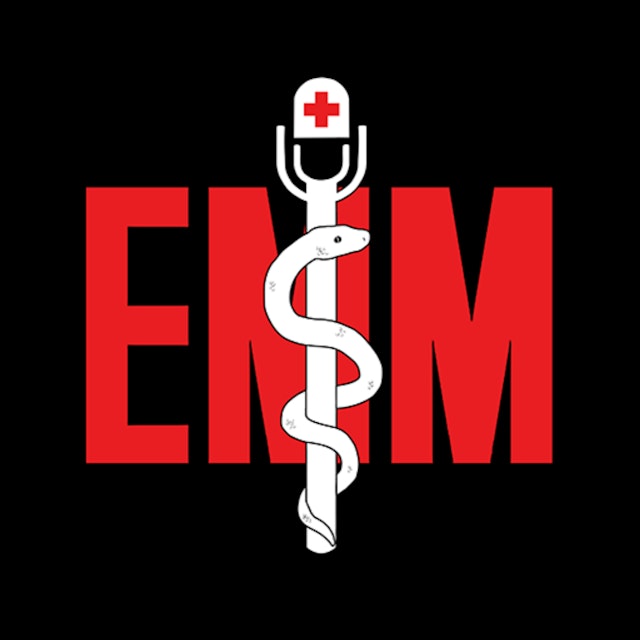Contributor: Meghan Hurley MD
Educational Pearls:
What is a nerve block?
-
A nerve block is the medical procedure of injecting anesthetic into the area around a nerve to block pain signals.
-
They are typically done with ultrasound guidance.
Are nerve blocks effective?
-
Most of the information we have about nerve blocks is extrapolated from fascia iliaca blocks. This nerve block targets the fascia iliaca compartment, which contains the femoral, lateral femoral cutaneous, and obturator nerves. These blocks are commonly done for hip fractures to help stabilize the patient while awaiting surgical repair.
-
The data for these types of injections is strong. They decrease pain, they decrease total morphine equivalents needed while a patient is in the hospital, they help mobilize patients earlier and start physical therapy earlier, and they help patients leave the hospital about a day earlier.
What is an example of an agent that can be used?
-
Bupivacaine. A long acting amide-type local anesthetic. It works best when paired with epinephrine which causes local vasoconstriction and allows the bupivaciaine to bathe the nerve for longer. It gives 5-15 hours of anesthesia (complete sensation loss), and up to 30 hours of analgesia (pain loss).
What’s an example of another block that can be done?
-
An Erector Spinae Plane (ESP) block is performed in the paraspinal fascial plane in the back. This can be used for pain around the ribs and before a variety of medical procedures including a Nuss procedure, thoracotomies, percutaneous nephrolithotomies, ventral hernia repairs, and even lumbar fusions.
What is one potential complication of a nerve block?
-
Local Anesthetic Systemic Toxicity (LAST).
-
There are three ways this can happen:
-
1) Using too much total anesthetic (Maximum dose of bupivacaine is 2.5 mg/kg).
-
2) Too much anesthetic is injected into a confined space which then gets absorbed into the venous system.
-
3) Injecting directly into the vasculature by mistake.
What are the signs that this complication has occurred?
-
Perioral tingling
-
Stupor
-
Coma
-
Seizures
What can that cause?
-
Cardiovascular collapse
How is that treated?
-
Intralipid AKA Soybean Oil, or “lipid emulsion” should be given as a bolus followed by a drip. These patients need to be admitted.
-
Bolus 1.5 ml/kg (lean body mass) intravenously over 1 min (max ~100 ml).
-
Continuous infusion at 0.25 mL/kg/min. Max dosing in the first 30 minutes is around 100 ml/kg.
-
Fun fact: Patients being treated for LAST with intralipid cannot undergo general anesthesia because the intralipid will impact the anesthesia drugs.
References
-
Long B, Chavez S, Gottlieb M, Montrief T, Brady WJ. Local anesthetic systemic toxicity: A narrative review for emergency clinicians. Am J Emerg Med. 2022 Sep;59:42-48. doi: 10.1016/j.ajem.2022.06.017. Epub 2022 Jun 13. PMID: 35777259.
-
Carvalho Júnior LH, Temponi EF, Paganini VO, Costa LP, Soares LF, Gonçalves MB. Reducing the length of hospital stay after total knee arthroplasty: influence of femoral and sciatic nerve block. Rev Assoc Med Bras (1992). 2015 Jan-Feb;61(1):40-3. doi: 10.1590/1806-9282.61.01.040. Epub 2015 Jan 1. PMID: 25909207.
-
Jain N, Kotulski C, Al-Hilli A, Yeung-Lai-Wah P, Pluta J, Heegeman D. Fascia Iliaca Block in Hip and Femur Fractures to Reduce Opioid Use. J Emerg Med. 2022 Jul;63(1):1-9. doi: 10.1016/j.jemermed.2022.04.018. Epub 2022 Aug 4. PMID: 35933265.
-
Kot P, Rodriguez P, Granell M, Cano B, Rovira L, Morales J, Broseta A, Andrés J. The erector spinae plane block: a narrative review. Korean J Anesthesiol. 2019 Jun;72(3):209-220. doi: 10.4097/kja.d.19.00012. Epub 2019 Mar 19. PMID: 30886130; PMCID: PMC6547235.
-
Lee SH, Sohn JT. Mechanisms underlying lipid emulsion resuscitation for drug toxicity: a narrative review. Korean J Anesthesiol. 2023 Jun;76(3):171-182. doi: 10.4097/kja.23031. Epub 2023 Jan 26. PMID: 36704816; PMCID: PMC10244607.
-
Weinberg, Guy. LipidRescue™ Resuscitation. http://www.lipidrescue.org/
Summarized by Jeffrey Olson MS2 | Edited by Jorge Chalit, OMSII
The podcast Emergency Medical Minute is embedded on this page from an open RSS feed. All files, descriptions, artwork and other metadata from the RSS-feed is the property of the podcast owner and not affiliated with or validated by Podplay.
